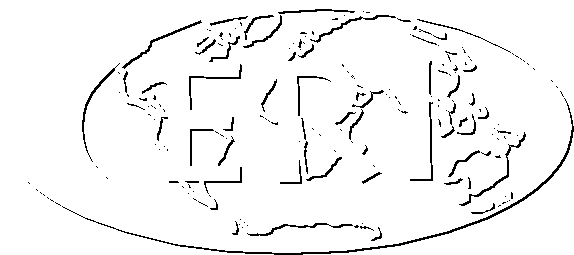| CERI is the successor of the Tennessee Earthquake Information Center (TEIC), which
was chartered in 1977 by the Tennessee Legislature. Present space totals 21,000 square
feet, including a CERI-staffed Earth Science Library.
As a Center of Excellence, CERI's seismograph networks grew to 30 stations in seven
states, providing data on regional earthquakes which clearly delineated the active New
Madrid seismic zone and the less active, and poorly understood, Southern Appalachian
seismic zone. However, in 1992, a new federal policy sharply reduced funding for re-
gional seismograph networks, but offered state-of-the art seismograph equipment for a
smaller number of regional stations. CERI's seismograph stations decreased as a result;
data from only six seismograph stations are currently being received. CERI is redesigning
the network with improved technology to produce lower operating costs and is seeking
resources to install a new 100-station New Madrid network during the next two years. |
| CERI has developed an effective portable seismograph network technology, the Portable
Array for Numerical Data Acquisition (PANDA:. This technology has been used for
earthquake studies in central Arkansas, the Andes, the New Madrid Seismic Zone, Ha-
wan, Taiwan and New Zealand. In 1991-1993, this technology detected abundant, small
earthquakes with very high 3-D spatial resolution in the most active part of the New
Madrid seismic zone and revealed a complex pattern of active faults in the source zone of
the great earthquakes of 1811-12. PANDA projects overseas are building fruitful research
partnerships with foreign institutions in several important earthquake-prone regions. |
| CERI conducts many geophysical and geologic field investigations of deep and shallow
deformation in the New Madrid seismic zone. Seismic reflection profiling reveals fault
movements at depths of hundreds to thousands of feet. At the surface, 'sand blows' of the
1811-1812 earthquakes have long been recognized. By blending techniques from geol-
ogy, archaeology and soil science, studies in pits and trenches have identified myriad
fractures through which liquefied sands flowed to the surface during 1811-1812 and
several earlier episodes of strong earthquake shaking. The evolving multi-disciplinary
process is unraveling the earthquake history of the region, putting present earthquake
hazards in clearer perspective.
CERI is taking direct measurements of contemporary New Madrid seismic zone deforma-
tion by reference to signals from Global Positioning System (GPS) satellites. GPS capa-
bility for worldwide geodetic measurements is also being exploited by CERI with other
institutions to measure mountain-building movements in the Andes Mountains.
CERI's engineering faculty and their students are deeply involved in assessing earth-
quake hazards and the potential for earthquake damage to lifelines and critical structures
throughout western Tennessee and northeastern Arkansas. Earthquake hazards of all
university campus buildings have been evaluated. A soil testing lab and a large database
on engineering properties of Mid-South soils compiled at CERI are used in many spon-
sored projects and serves the information needs of private engineering firms in the region.
CERI is well known for its thorough, long-term, integrated study of earthquakes in
relatively stable continental areas. The New Madrid earthquakes, the 1886 Charleston,
S.C. earthquake and the disastrous Latur, India earthquake of Sept. 29, 1993, are ex-
amples of earthquakes not explained by the modern theory of the earth's drifting crustal
plates. They represent a rather poorly understood, but growing, threat of rare, destructive
events in many countries not known for repeated historic earthquake disasters. Learning
more about this phenomenon should affect planning practices for critical facilities in
eastern North America and other large areas of the world.
A full-time Resource Center director at CERI supplies information and responds to
inquiries from teachers, government agencies, professional organizations, churches,
schools, civic groups and the public. CERI is the main source of technical information on
earthquakes and earthquake hazards for emergency management organizations, utilities,
local and national news media, and the insurance and construction industries. CERI also
provides a Weekly Earthquake Summary to 58 recipients by fax, mail and email. |

